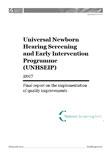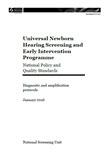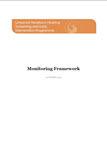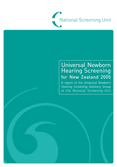
Revised Audiology Guidelines for babies with meningitis
August, 2021
This document updates the audiology guidelines concerning babies with meningitis and meningoencephalitis (3.3.3 Audiological management of babies with meningitis) found on pages 6, 13 & 14 of the 2016 UNHSEIP Diagnostic and amplification protocols. The full updated document will be published once a complete review of the protocols has concluded. This change is due to the urgent assessment required to identify severe/profound hearing loss, which may require cochlear implant(s) before any cochlear ossification takes place and mandates a direct referral to audiology by paediatric and/or NICU/SCBU staff instead of via UNHSEIP screeners.

